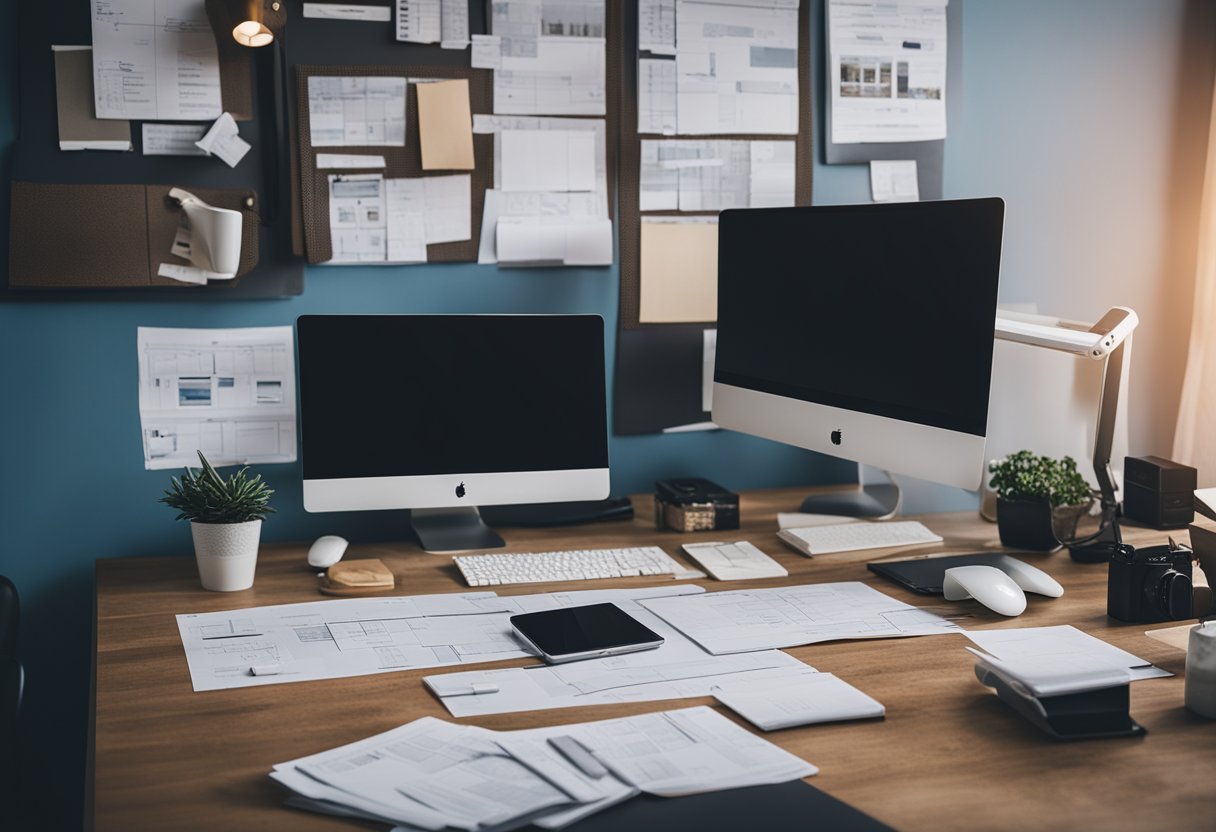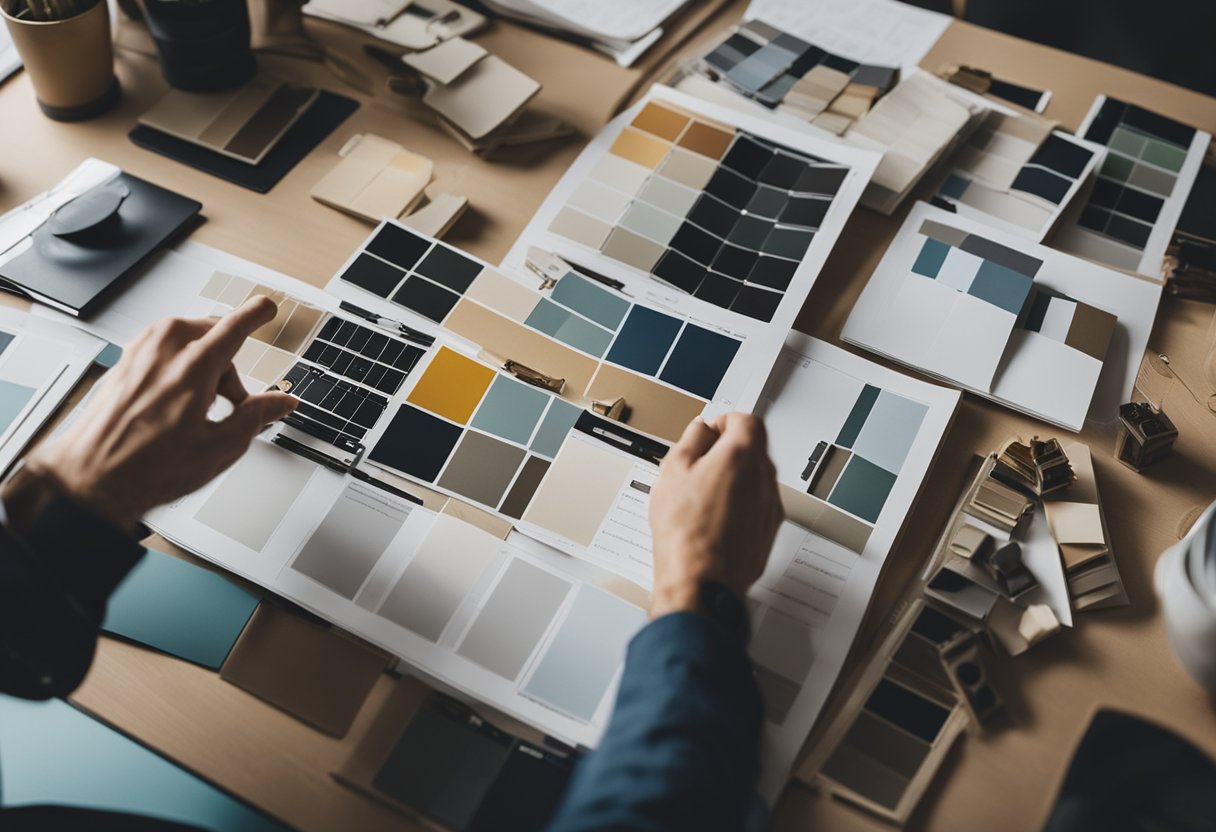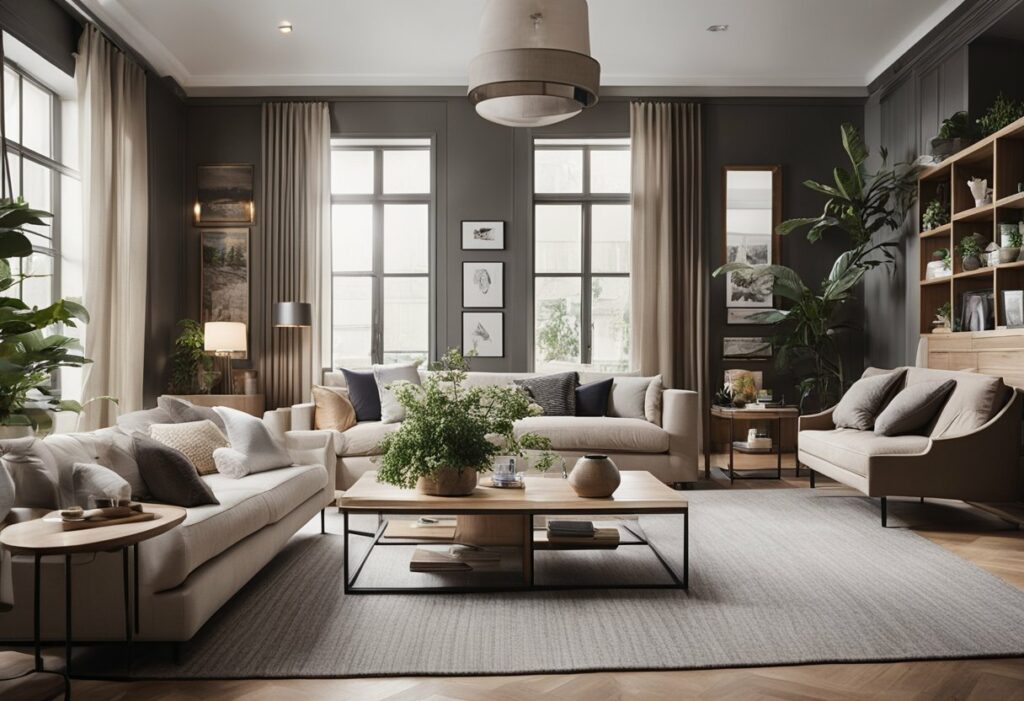Interior Design Work Stages: A Guide to Creating Your Dream Space
If you’re planning to redesign your home or office space, it’s important to understand the interior design work stages. These stages will help you manage your project effectively and ensure that your vision is brought to life. Whether you’re working with an interior designer or tackling the project on your own, knowing what to expect can make the process smoother and more enjoyable.

The interior design process typically includes three key stages: planning and conceptualisation, execution and management, and final touches. During the planning and conceptualisation stage, you’ll work with your designer to establish a design concept, create a budget, and develop a timeline for the project. This stage is crucial for ensuring that everyone is on the same page and that the project stays on track. The execution and management stage involves the actual implementation of the design plan, including selecting materials, hiring contractors, and overseeing the construction process. Finally, the final touches stage involves adding the finishing touches to the space, such as furniture and accessories, to complete the overall look and feel of the design concept.
Key Takeaways
- Understanding the interior design work stages can help you manage your project effectively and ensure that your vision is brought to life.
- The three key stages of interior design are planning and conceptualisation, execution and management, and final touches.
- During the planning and conceptualisation stage, you’ll establish a design concept, create a budget, and develop a timeline for the project; during the execution and management stage, you’ll implement the design plan; and during the final touches stage, you’ll add the finishing touches to the space.
Planning and Conceptualisation

Planning and conceptualisation are the first and most important stages of the interior design process. This stage sets the foundation for the entire project and ensures that all parties involved are on the same page.
Initial Consultation
The initial consultation is the first step in the planning process. It is an opportunity for you to meet with your client and discuss their needs, preferences, and budget. During this stage, you will also assess the project scope and gather relevant information. This could include taking measurements of the space, reviewing any existing floor plans, and asking your client to complete a questionnaire.
Concept Development
Once you have all the necessary information, you can start to develop your concept. This involves creating a layout for the space, which includes space planning and the creation of a mood board. The mood board will help you to visualise the project and ensure that you and your client are on the same page with regards to the style and aesthetic of the space.
Design Documentation
Once you have developed your concept, you will need to create design documentation. This includes floor plans, 3D renderings, and drawings. These documents will help you to communicate your design plan to your client and ensure that everyone is on the same page. It is important to note that the design documentation should be detailed and accurate, as it will be used throughout the project.
In conclusion, the planning and conceptualisation stage is crucial to the success of any interior design project. It requires research, collaboration, and attention to detail. By taking the time to develop a project scope, budget, and timeline, you can ensure that your project runs smoothly and stays on track.
Execution and Management

Once you have completed the design development and technical design phases, you are ready to move into the execution stage of your interior design project. This is where the project really comes to life, and you will see your vision take shape.
Project Management
During the execution stage, it is important to have a solid project management plan in place. This includes using project management software to keep track of milestones, checklists, and purchase orders. Effective communication between all parties involved is crucial to ensure that the project is completed on time and within budget.
Procurement and Installation
Procurement and installation are also key components of the execution stage. This includes ordering and coordinating the delivery of furniture, cabinetry, and other materials. It is important to ensure that everything is installed correctly and to your specifications.
Project Completion
Once everything is installed, it is time for the final walkthrough. This is where you will inspect the project and address any final issues or concerns. After this, you will receive the final invoice. It is important to ensure that everything is to your satisfaction before signing off on the project.
Overall, the execution and management stage is where your design workflow really comes to life. By having a solid project management plan in place, effective communication, and ensuring that everything is installed correctly, you can ensure that your project outcome is a success and your client is satisfied with the final result.
Frequently Asked Questions

What does the initial consultation entail in the interior design journey?
The initial consultation is a crucial part of the interior design journey. This is when you will meet with your designer to discuss your vision, budget, and timeline. During this meeting, you will also have the opportunity to ask any questions you may have about the process. Your designer will use this information to create a design plan that meets your needs and exceeds your expectations.
Can you outline the key phases in developing an interior design concept?
The key phases in developing an interior design concept include the pre-design stage, schematic design, design development, and construction documentation. During the pre-design stage, your designer will gather information about your project and create a design brief. In the schematic design phase, your designer will create a preliminary design concept based on your design brief. In the design development phase, your designer will refine the design concept and create detailed drawings and specifications. Finally, during the construction documentation phase, your designer will create detailed plans and specifications that will be used by contractors to build the project.
How do designers move from concept to detailed design plans?
Designers move from concept to detailed design plans by refining the design concept and creating detailed drawings and specifications. During the design development phase, your designer will work closely with you to refine the design concept. They will then create detailed drawings and specifications that will be used by contractors to build the project. Your designer will also work with you to select finishes, fixtures, and furnishings that meet your needs and budget.
What involves the selection and sourcing of materials and furnishings?
The selection and sourcing of materials and furnishings is an essential part of the interior design process. During this phase, your designer will work with you to select finishes, fixtures, and furnishings that meet your needs and budget. They will also source these items from suppliers and vendors and coordinate the delivery and installation of these items.
What are the essential steps during the implementation phase of interior design?
The essential steps during the implementation phase of interior design include project management, site preparation, installation, and styling. During project management, your designer will oversee the entire project to ensure that it is completed on time and on budget. They will also coordinate the work of contractors and suppliers. During site preparation, your designer will prepare the site for installation. During installation, your designer will oversee the installation of finishes, fixtures, and furnishings. Finally, during styling, your designer will add the finishing touches to the space to make it feel like home.
Could you describe the final review and handover stage in interior design projects?
The final review and handover stage is the last stage of the interior design process. During this stage, your designer will review the completed project to ensure that it meets your needs and exceeds your expectations. They will also address any issues that may arise during this review. Finally, your designer will hand over the completed project to you, along with any warranties and maintenance instructions.



